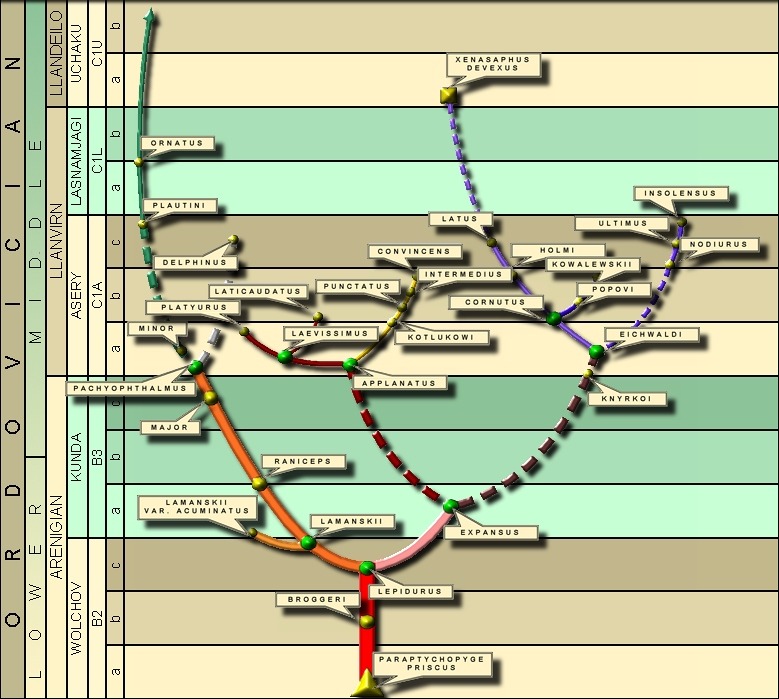Having appeared in the geological chronography of the Earth about 600 million years ago, trilobites in their long history (over 350 million years) went through many global catastrophes and climatic changes (e.g., Ordovician and Carboniferous-Permian glaciations). They were the “witnesses” of a birth and further growth of fundamental groups of the animal world. Then, by the end of the Permian period (about 230 million years ago) not a single trilobite had survived in the ocean. Trilobites vanished in the past, but their remains today serve as an impressive evidence of the great force of Evolution in the infancy of this World.
Various representatives of trilobites have been known since the beginning of the early Cambrian; this allows to think of their rather long evolution in pre-Cambrian. In Cambrian the variety of trilobite species reached its maximum. In Ordovician and Silurian the number of the genera somewhat decreased, though their morphological variety was very brightly expressed. Ordovician trilobites are so various, that their “morphological palette” has no analogues among either other trilobites, or other groups of arthropods as a whole (except for insects). Devonian was the last short period of time when trilobites flourished, Carboniferous was a period of trilobite withering. The trilobites of the Permian period are hardly as various and numerous as they were in the beginning of Paleozoic. The Carboniferous and Permian trilobites are rare and uniform.
For Ordovician the most typical are Asaphidae, lllaenidae, Cheiruridae, Encrinuridae, Raphiophoridae, Lichadidae, Remopleuridae, Harpedidae and Phacopidae.
The development of some families went along a conservative line, at slow rates ( Remopleuridae, Phacopidae, Raphiophoridae, Harped/dae). The development of other families (Asaphidae, lllaenidae, Cheiruridae, Encrinuridae, Lichadidae) proceeded at tremendous rates and completely unforseen ways.
The most distinguished by a variety and number of species are Asaphidae, and in particular the genus Asaphus “a visiting card” of Ordovician trilobites. This genus, characteristic for Ordovician sediments of nearly the whole of the south hemisphere, occurred for the first time in the Baltic region, and it is here that it reached its brightest development. The Ordovician of the Baltic region includes over 30 species of the genus Asaphus. The majority of the genera is known only in the St.-Petersburg region; they are not met anywhere else. Basing on an example of this remarkable genus we shall try to describe briefly some evolutionary tendencies of Ordovician trilobites and at the same time to present our views on a mysterious “family tree” of Asaphus.

Leave A Comment?